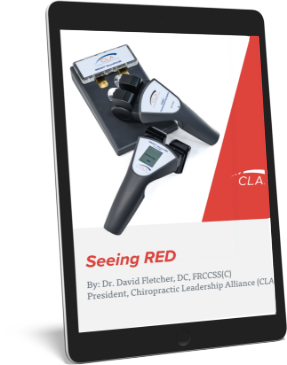By Dr. Christopher Kent
A recent article from Germany
describes experimental evidence that cardiac function in infants is influenced by the upper cervical spine.(1) The study included 365 male and 330 female infants with a diagnosis of KISS. KISS is an acronym for “kinematic imbalance due to suboccipital strain.” The infants displayed “deficits in neuromuscular steering as well as asymmetry,” as well as radiographic abnormalities at the occipitoatlantal articulation. KISS, used in this context, is analogous to vertebral subluxation.
“Chiropractic therapy” was applied, consisting of “a short, gentle thrust administered onto the suboccipital region with the inner side of the interphalangeal portion of the second digit.” The thrust was applied to the side of the asymmetry. Changes in heart rate were measured before and after the “impulse” was applied. There was a decrease in the heart rate in a significant number of cases (40.1%). Most bradycardia led to a fast recovery, followed by a short period of tachycardia. The authors suggest, “this sequence of events constitutes a normal and physiological response.”
In response to the question of safety, the authors state, “The chiropractic therapy has proven to be a successful technique which can be used to treat disorders, especially cerebral disturbances of motor patterns of various etiology (wryneck, cscoliosis, irritation of the plexus brachialis), sensometric disturbances of integration ability (retardation of sensation and coordination), as well as pain related entities such as crybabies with ‘3month colic’ or hyperactivity with sleeplessness. In older children, disturbances of this kind are known as retardation of development in motor patterns as well as in sensory abilities…in most cases chiropractic treatment seems to be the most successful therapy which helps to treat such disorders…Although retrospective studies about complications for manual therapy are available for adults, no special data about children are given…no incidence has been reported up to now. We can report more than 20,000 children treated without serious complications.”
Finally, the authors suggest, “It will be interesting in the future to investigate a possible relationship between asymmetry [of the atlantooccipital region] and the occurrence of SID [sudden infant death].”
This study is significant for many reasons. It establishes experimental evidence that upper cervical chiropractic adjustment, which they term “therapy,” affects heart rate. The authors also offer statements supportive of the use of such care in infants and children, noting that they have safely used these techniques on more than 20,000 children.
While we may not agree with their use of such terms as “therapy” and “treatment,” it should be realized that this paper originated in Germany
, and was written by nonchiropractors. The authors are to be commended for their description of the examination and adjusting techniques applied. Finally, their conjecture concerning SIDS deserves further exploration.
More than 10 years have elapsed since the publication of chiropractors Schneier and Burns’ paper which investigated the relationship of atlantooccipital hypermobility in sudden infant death syndrome.(2) Their work involved flexion/extension radiographs of deceased infants, which were made with the cooperation of the coroner. In this blinded study, the authors concluded, “Relative measurements suggested that a correlation existed between instability in the atlantooccipital articulation and sudden infant death syndrome.”
Several compelling questions remain unanswered. Why was the Schneier and Burns study ignored by the chiropractic research community? Why did it take a group of German medical doctors to explore this phenomenon? Why aren’t our college research departments and research organizations pursuing such studies? Where’s the NIH money?
While some attempt to position chiropractic as little more than a mediocre treatment for acute mechanical back pain, children are dying, or going through life with compromised sensory and motor development. We must broaden our vision, and prioritize our resources.
References
1. Koch LE, Koch H, GraumannBrunt S, et al: “Heart rate changes in response to mild mechanical irritation of the high cervical spinal cord region in infants.” Forensic Science International 2002;128:168.
2. Schneier M, Burns RE: “Atlantooccipital hypermobility in sudden infant death syndrome.” Journal of Chiropractic Research and Clinical Investigation 1991;7(2):33.




























































